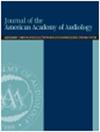美国听力学家的职业倦怠。
IF 1
4区 医学
Q3 AUDIOLOGY & SPEECH-LANGUAGE PATHOLOGY
引用次数: 2
摘要
背景关于听力学家职业倦怠的研究是有限的,特别是在美国。最近这个行业的变化可能加剧了职业倦怠。目的调查美国听力学家在不同工作环境下的职业倦怠情况。研究设计本研究采用三种调查方法:人口统计学/工作压力源、Maslach职业倦怠量表(MBI)和职业生活质量量表(ProQOL)。研究样本参与者为149名美国听力学家。参与者在经验、工作环境和地点方面各不相同。数据收集和分析第一次调查提供了人口统计数据、对非处方助听器的看法、压力源和压力等级。MBI评估了倦怠的三个维度:情绪耗竭、人格解体和个人成就感。ProQOL评估倦怠、同情疲劳和同情满意度。分析包括定量数据的描述性和推断性统计以及定性数据的专题分析。结果听力学家工作倦怠低、同情疲劳低、同情满意度高。经验与压力等级无关;然而,与经验不足的听力学家相比,经验丰富的听力学家有更高的同情满意度和更低的倦怠、情绪耗竭和人格解体。对非处方助听器的担忧与压力等级有关。专题分析确定了11个压力源,其中50%的压力源按工作职责、时间和患者分类。结论美国听力学家职业倦怠率较低。经验不足的听力学家的职业倦怠程度最高。压力与经验无关。压力源包括探视病人的时间不足、大量的病例、耗时的行政任务、销售助听器的压力以及紧张的人际沟通。本文章由计算机程序翻译,如有差异,请以英文原文为准。
Burnout in U.S. Audiologists.
BACKGROUND
Research on burnout in audiologists is limited, especially in the United States. Recent changes to the profession may have increased burnout.
PURPOSE
The purpose was to investigate burnout in the U.S. audiologists in diverse work settings.
RESEARCH DESIGN
This study used three surveys: demographics/workplace stressors, Maslach Burnout Inventory (MBI), and professional quality of life (ProQOL).
STUDY SAMPLE
Participants were 149 U.S. audiologists. Participants were diverse regarding experience, work setting, and location.
DATA COLLECTION AND ANALYSIS
The first survey provided demographics, perspectives on over-the-counter (OTC) hearing aids, stressors, and stress rating. The MBI assessed three dimensions of burnout: emotional exhaustion, depersonalization, and personal accomplishment. The ProQOL assessed burnout, compassion fatigue, and compassion satisfaction. Analyses included descriptive and inferential statistics of quantitative data and thematic analysis of qualitative data.
RESULTS
Audiologists had low burnout, low compassion fatigue, and high compassion satisfaction. Experience was not related to stress rating; however, more experienced audiologists had greater compassion satisfaction and lower burnout, emotional exhaustion, and depersonalization compared with less experienced audiologists. Concern about OTC hearing aids was associated with stress rating. Thematic analysis identified 11 stressors, with 50% of stressors classified under work duties, time, and patients.
CONCLUSION
The U.S. audiologists had low burnout rates. Burnout was greatest in less experienced audiologists. Stress was not related to experience. Stressors included insufficient time to see patients, heavy caseload, time-consuming administrative tasks, pressure to sell hearing aids, and stressful interpersonal communication.
求助全文
通过发布文献求助,成功后即可免费获取论文全文。
去求助
来源期刊
CiteScore
3.10
自引率
0.00%
发文量
46
审稿时长
6-12 weeks
期刊介绍:
The Journal of the American Academy of Audiology (JAAA) is the Academy''s scholarly peer-reviewed publication, issued 10 times per year and available to Academy members as a benefit of membership. The JAAA publishes articles and clinical reports in all areas of audiology, including audiological assessment, amplification, aural habilitation and rehabilitation, auditory electrophysiology, vestibular assessment, and hearing science.

 求助内容:
求助内容: 应助结果提醒方式:
应助结果提醒方式:


